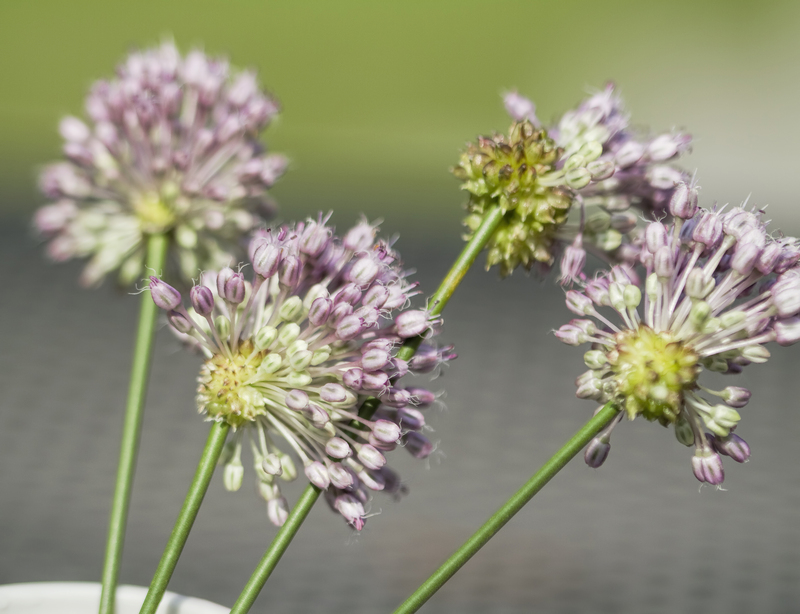Essential tips for flourishing orchids
Posted on 27/05/2025
Essential Tips for Flourishing Orchids: A Comprehensive Guide
Orchids are widely beloved for their graceful beauty, exotic appeal, and surprisingly resilient nature. While these extraordinary plants have a reputation for being tricky, with the right guidance anyone can grow orchids successfully at home. In this guide, you'll discover essential tips for flourishing orchids and explore the art and science of cultivating thriving, blooming plants year-round.

Understanding Orchid Varieties
Before diving into orchid care tips, it's essential to understand the different types of orchids available. There are approximately 28,000 orchid species, but for the home gardener, several popular genera dominate collections:
- Phalaenopsis (Moth Orchid): Easiest to grow, blooms for months.
- Dendrobium: Prefers cooler, bright conditions, striking blooms.
- Cattleya: Known for large, fragrant flowers, needs bright light.
- Oncidium (Dancing Lady): Adapts well indoors, tiny cheerful flowers.
- Paphiopedilum (Lady Slipper): Dramatic pouch-like flowers, loves shade.
Identifying your orchid variety is critical for applying the best techniques for flourishing orchids in your care routine.
1. Choosing the Right Pot and Medium
Why Orchid Roots Matter
Orchid roots differ from those of many houseplants. They often require airflow and quick drainage to prevent rot and support healthy growth.
Potting Choices for Optimal Growth
- Use clear pots when possible to monitor root health and moisture levels.
- Pick pots with ample drainage holes to prevent waterlogging.
- Select a special orchid mix (bark, sphagnum moss, or coconut husk) rather than regular soil.
- Repot every 1-2 years, or when the medium breaks down or roots outgrow their space.
These potting essentials ensure your orchid thrives and flourishes by promoting good air circulation and healthy roots.
2. Mastering the Art of Watering Orchids
How Much and How Often?
Watering is often where orchid beginners struggle. Too much water can suffocate roots, while too little leaves plants dehydrated. Here are some flourishing orchid watering tips:
- Water no more than once a week for most orchids, and reduce in winter.
- Let the potting medium dry out almost completely between waterings.
- Prefer soaking your orchid's pot for 10-20 minutes, then let it drain well.
- Water in the morning to allow leaves and roots to dry during the day, preventing rot.
- Use tepid water; avoid softened or chlorinated tap water.
Remember, the secret to flourishing orchids is restrained, attentive watering!
3. Lighting Requirements: Shedding Light on Success
Orchid Lighting Needs
Flourishing orchids need the right balance of light. While sunlight is essential, direct rays can scorch leaves. Instead:
- Phalaenopsis and Paphiopedilum: Prefer bright but indirect light, such as an east- or west-facing window.
- Cattleya, Oncidium, and Dendrobium: Thrive with more light--try a south-facing window with sheer curtains.
- Watch leaf color for signs: Bright green means enough light, dark green signals too little, and yellowish or red tints mean too much.
- Supplement natural light with grow lights for orchids in low-light rooms.
*Rotate your orchid every week* to ensure even exposure, promoting well-shaped, robust blooms.
4. Humidity and Air Circulation
Orchids Thrive on Moisture (But Not Too Much!)
Orchids are tropical plants, which means they flourish in environments with humidity levels of 40-70%. If your home is dry, especially in winter, consider these orchid humidity tips:
- Group orchids together to create a mini-microclimate.
- Use a humidity tray filled with pebbles and water under pots.
- Mist foliage in the morning--avoid excessive leaf wetness, particularly at night.
- Install a small room humidifier for consistent moisture.
- Maintain gentle air movement with a fan or cracked window--but avoid cold drafts!
The right humidity levels and ventilation are essential for orchid leaves, buds, and roots to flourish and bloom beautifully.
5. Fertilizing for Vibrant Growth and Flowers
Feeding Your Orchid
Just like you, your orchids need balanced nutrition to truly flourish. Applying fertilizer--properly and in moderation--makes a world of difference.
- Use a fertilizer specifically designed for orchids, typically 20-20-20 or one higher in phosphorus (the middle number) for blooming.
- Feed "weakly, weekly": Dilute the fertilizer to half or quarter-strength and apply once a week, increasing to twice monthly when growth slows in winter.
- Flush the potting mix with plain water monthly to remove fertilizer salts that could damage roots.
- Never fertilize a dry orchid--always water first to avoid root burn.
Regular, gentle feeding will ensure your orchids reward you with lush leaves and breathtaking flowers all year.
6. The Importance of Temperature
Warmth Matters for Flowering
Each type of orchid has its ideal temperature range. Generally, most home-growing orchids flourish best with:
- Day: 68?F-80?F (20?C-27?C)
- Night: 60?F-68?F (16?C-20?C)
- Slight drops in temperature at night often trigger budding and blooming in many orchid species.
- Avoid sudden temperature shocks--keep orchids away from heaters, air conditioners, and drafty windows.
Paying attention to temperature will encourage your orchids to flourish with more regular, vibrant blooms.
7. Encouraging Orchid Re-blooming
How to Make Your Orchids Bloom Again
Many orchid-owners despair after the first flowering cycle ends, but with the right tips, you can enjoy repeat blooms for years from a single plant. Consider these strategies for re-blooming orchids:
- After flowers fade, trim the spike just above a healthy node (Phalaenopsis) or to the base (other types).
- Reduce watering and fertilizer slightly for a rest period.
- Expose orchids to slightly cooler nights to initiate new spikes.
- Keep up with steady, indirect light and balanced humidity.
With patience and proper care, you'll see new spikes and dazzling flowers return.
8. Dealing with Common Orchid Problems
Prevent Pests and Diseases
Even the healthiest orchids occasionally face challenges. Here's how to troubleshoot issues:
- Wilted leaves? Check for root rot from overwatering or compacted mix.
- Pale or scorched foliage? Move plant out of direct sun or add shading.
- Visible pests like mealybugs or spider mites? Treat with neem oil or insecticidal soap, and isolate infected plants.
- Black spots or mushy patches? Prune away affected tissue and improve air circulation.
- If your orchid stops blooming entirely, adjust light, water, or fertilizer according to its type.
Regularly check your orchids for early signs of trouble and act promptly to keep your collection healthy and flourishing.
Orchid Care Myths: What to Avoid
Dispelling Common Orchid Misconceptions
- Myth: "Ice cubes are best for watering orchids."
- Reality: Orchids prefer tepid water; ice can shock roots.
- Myth: "Orchids are too difficult for beginners."
- Reality: Many types (especially Phalaenopsis) are perfect starters!
- Myth: "More water means more blooms."
- Reality: Overwatering leads to root rot and no flowers.
- Myth: "Orchids don't need feeding."
- Reality: Proper fertilizer is key to fully flourishing orchids.
Trust proven tips for orchids instead of common myths to ensure success.
Advanced Tips for Orchid Enthusiasts
- Label each plant with its name, date of acquisition, and last repotting.
- Track bloom cycles in a gardening journal to observe what works for each orchid species.
- Experiment with different potting media mixes to match your home's humidity and each orchid's needs.
- Join a local orchid society or online community for expert advice and troubleshooting support.
Becoming an orchid expert is an ongoing journey--embrace learning and enjoy every bloom!

Frequently Asked Questions About Flourishing Orchids
How often should I water my orchid?
Most household orchids require watering every 5-7 days. Check the medium with your finger--only water when it feels dry almost to the bottom.
How do I tell if my orchid has enough light?
Leaves should be a vibrant, medium green. Very dark leaves signal too little light; yellow or reddish tints indicate too much sun.
When should I repot my orchid?
Repot when the medium breaks down, the plant outgrows its pot, or roots start escaping the bottom or sides. Usually every 1-2 years.
Why are my orchid's leaves wrinkling?
Shriveling leaves are signs of underwatering or root problems. Check the roots--healthy orchid roots should be white or silvery-green and firm.
Conclusion: Cultivate Beauty with Confidence
Growing orchids is a rewarding, joyful experience--one that anyone can master with the right care and a bit of patience. By applying these essential tips for flourishing orchids, you'll enjoy lush, lasting blooms and healthy, vigorous plants. Remember, each orchid has its own unique preferences. Observe, experiment, and enjoy the breathtaking beauty your thriving orchids bring to your home, season after season.
Ready to take your orchid care to new heights? Embrace these orchid success secrets and watch your plants flourish like never before!

